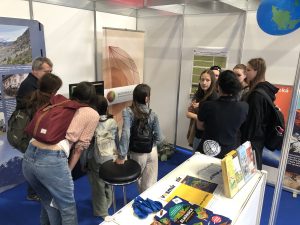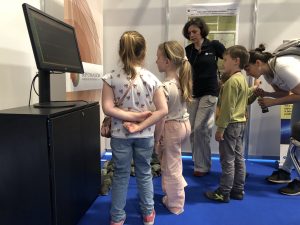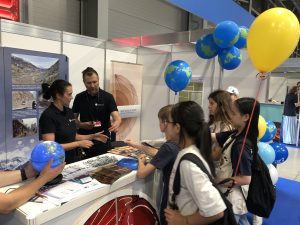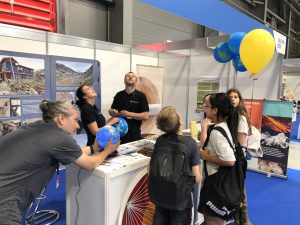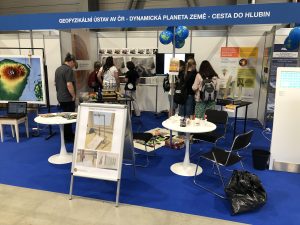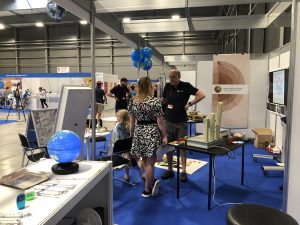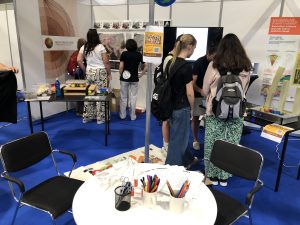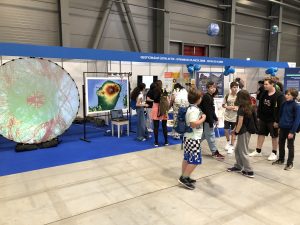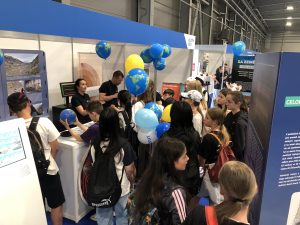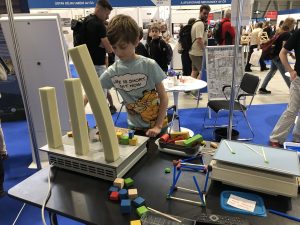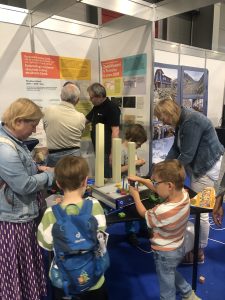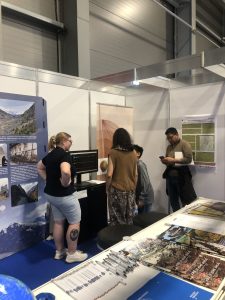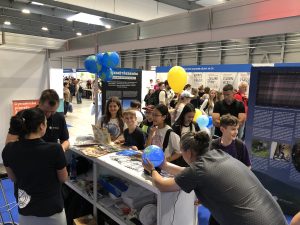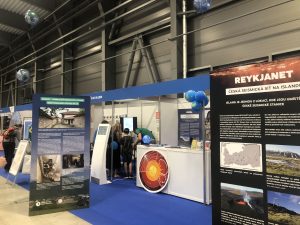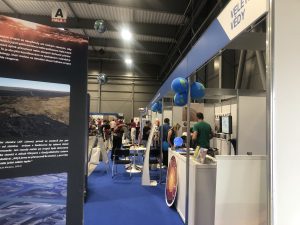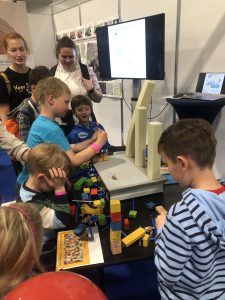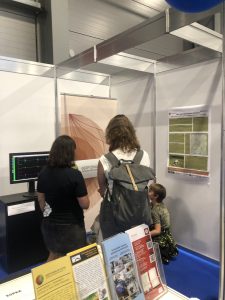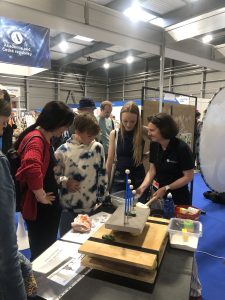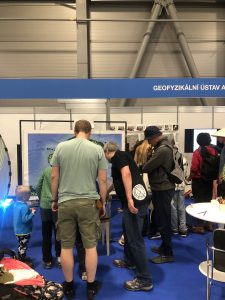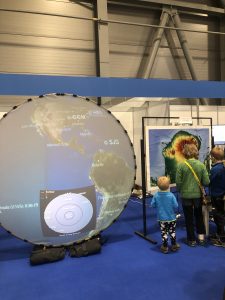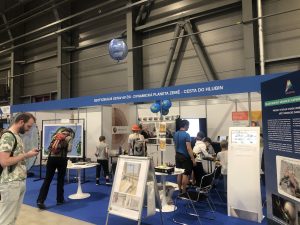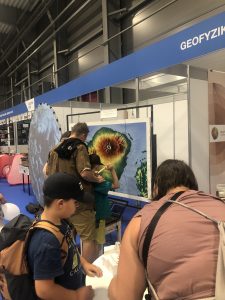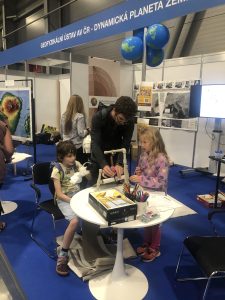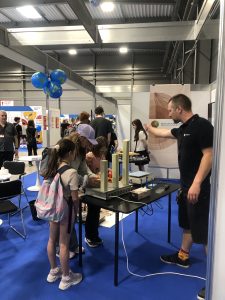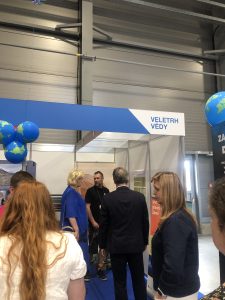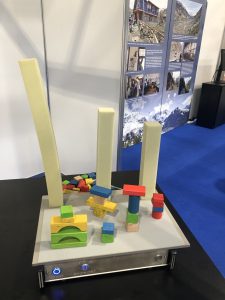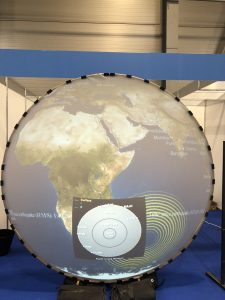The Science Fair is the largest popular science event organized by the Czech Academy of Sciences since 2015. The event took place at the PVA Expo Prague Letňany from Thursday, June 5, to Saturday, June 7, 2025. Admission was free. Over 100 exhibits were on display, including 40 from the Czech Academy of Sciences’ research institutes, universities, and other scientific institutions and companies. This year, the three-day event attracted over 58,000 visitors.
We sincerely thank everyone who actively contributed to the preparation of the exhibit and who were available to visitors at the Institute of Geophysics (GFÚ) booth during the event.
Our exhibit was titled “Dynamic Planet Earth – A Journey to the Depths” and was divided into several stations focused on seismology.
Create Your Own Earthquake – During an earthquake, you can feel the ground moving beneath your feet, buildings shaking, and often hear a rumbling sound. Earthquakes are measured using seismometers. Visitors could try stomping on the ground to see how these sensitive instruments work.
Shake Table (also known as a seismic vibration table) – This device is used in research and engineering to simulate the effects of earthquakes on various structures. The table replicates the movements occurring during real earthquakes, enabling testing and evaluation of the resilience of buildings, bridges, infrastructure, and other structures to seismic waves. Children and adults could build their own structures and test whether they would withstand earthquake waves.
Earth Projection – On a circular screen, we projected how seismic waves travel around the globe, where earthquakes most frequently occur, and what the Earth’s interior looks like—from the crust to the core. Viewers could see animations of mass movements within the Earth’s mantle and the structure of the entire Earth.
Wave Propagation Animations – On a monitor, we showed how waves from major recent earthquakes spread across Europe, recorded by stations from the AdriaArray project. These included earthquakes in Morocco (2023), Turkey (2023), Myanmar (2025), and Slovakia (2024).
Seismic Experiments – At this station, we demonstrated how different types of seismic waves propagate and how they can be recorded using standard mobile phone applications. We simulated earthquakes using a manually operated vibration table that can be easily built at home. We also demonstrated the effect of waves of different frequencies on buildings of different heights (resonance test) and possible methods of isolation. Additionally, we showed the effect of liquefaction of sediments during earthquakes.
Banging Map – Here we simulated determining the location of an earthquake. The map featured five sensors (stations) that recorded the arrival time of waves generated by striking the map with a hammer. A connected display showed waveforms from all the sensors and the calculated position of the strike on the map.
Build Your Own Seismograph – Visitors could assemble a simple horizontal seismograph from prepared parts and take home a seismogram recorded on paper.
Memory Game – On a touch panel, visitors could play a memory game (pexeso) with historical depictions of earthquakes and volcanoes.
Exhibit Concept and Earth Projection: Petr Kolínský
Seismic Field Station and Shake Table: Jakub Klicpera
Seismic Experiments: Hana Kampfová Exnerová
AdriaArray Record Animations: Luděk Vecsey
Banging Map: Bohuslav Růžek and Petr Jedlička
Seismograph Kit: Jiří Kvapil
Memory Game: Petr Jedlička
Animations for Earth Projection Selection: Christian Sippl
Exhibit Organization, Logistics, Material Support: Lucie Crippa
We also thank everyone who helped on-site:
Jan Burjánek, Jana Doubravová, Caroline Fenske, Hana Grison, Radek Klanica, Diana Konrádová, Svetlana Kováčiková, Radek Kubečka, Václav Kuna, Roman Werenyckyj, Jan Zedník
Dynamic Planet Earth is one of the programs under the AV21 Strategy, coordinated by the Institute of Geophysics (GFÚ). In addition to the Institute of Geophysics of the Czech Academy of Sciences, the program includes the Geological Institute, the Institute of Geonics, the Institute of Atmospheric Physics, the Institute of Rock Structure and Mechanics, and the Institute of Computer Science of the Czech Academy of Sciences.
Photos: Lucie Crippa (GFÚ) a Petr Kolínský (GFÚ)


